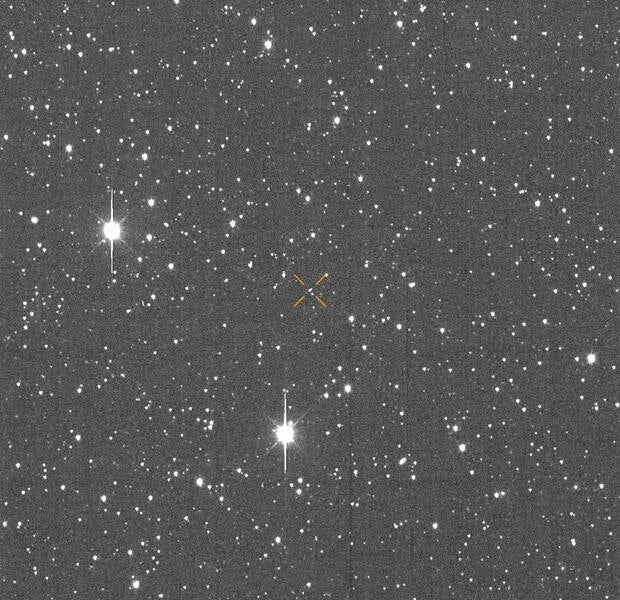
Odds of asteroid YR4 2024 hitting Earth in 2032 go up, then down again, in latest NASA analysis
An asteroid gaining notoriety for its potential to collide with Earth in 2032 was estimated Tuesday to have roughly a 3% chance of striking our planet — the highest probability ever assigned — before additional analysis Wednesday lowered the chances to about 1.5%, according to NASA’s Center for Near-Earth Object Studies.
Risks of the massive space rock — which falls into the “city killer” category — actually making impact have fluctuated since it was first discovered last December. Called 2024 YR4, the near-Earth asteroid initially carried a 1% chance of hitting land when NASA and the European Space Agency first announced its existence last month.
Protocols require the agencies to formally notify the public when the odds of an asteroid strike reach that 1% threshold, which in itself is an extremely rare occurrence.
The highest estimate, by NASA’s Jet Propulsion Laboratory, suggested a 3.1% chance the asteroid will hit Earth on Dec. 22, 2032, during a fleeting window of time in which the rock’s orbit around the sun intersects the path of the planet. That would make the odds of a collision still quite small, about 1 in 32.
The European Space Agency’s latest probability estimate was slightly lower, at 2.8%. Last week, NASA and the ESA agreed the probability of an asteroid strike was closer to 2%.
“However,” NASA reported, “on Wednesday, Feb. 19, new data collected overnight reduced the impact probability to 1.5%.”
It added, “NASA expects the impact probability to continue to evolve as new observations of asteroid 2024 YR4 are made over the coming days and weeks.”
Astronomers and researchers have said the probability could drop to zero as they learn more about the asteroid, which will be closely observed by the James Webb Space Telescope before it disappears from view in April. Much of the risk is based on an area of “uncertainty” in outer space, where the asteroid may or may not end up, and rising odds reflect new insights into that area, according to Richard Moissl, the head of the European Space Agency’s Planetary Defence Office.
“The size of the Earth — which is inside the uncertainty area — is compared to the entire area of the uncertainty of where the asteroid could be in that critical moment in time. This equated to about 1% when we reached this threshold for international awareness,” Moissl told CBS News last week, speaking about how the odds of a collision are determined.
The size of the uncertainty region has shrunk since then, because more is known about it, so Earth, remaining the same size, occupies a greater portion of the region than it did originally. Scientifically, that drives up the probability even though nothing has truly changed, Moissl said. He emphasized that even a 3% chance of hitting Earth corresponds with a 97% chance of missing it, and in all likelihood 2024 YR4 will not pose threats to our world.
(ATLAS / University of Hawaii / NASA via AP
“What will happen is, with our gaining knowledge, uncertainty will shrink further and further and further,” he said. “And the expected case is that we will manage to shrink it so much that Earth is no longer inside this uncertainty region, and then the impact probability will drop to zero.”
Probability of a crash will most likely dip below 1% before April, experts say, as the asteroid’s orbit carries it too far from Earth for humans to see it on the ground. After that, 2024 YR4 will not be visible again for four years.
It is possible the probability of a collision continues to rise, moderately, if its route takes it on a “close flyby” of Earth. Moissl said “this is still no cause for alarm,” although international space organizations are taking the slim risk seriously. The asteroid, at 40 to 90 meters wide, could be capable of destroying a mid-sized city on Earth. If researchers find its actual size to be nearer the top end of that range, it could flatten some of the world’s largest metropolitan areas.
More
More
Source: cbsnews.com